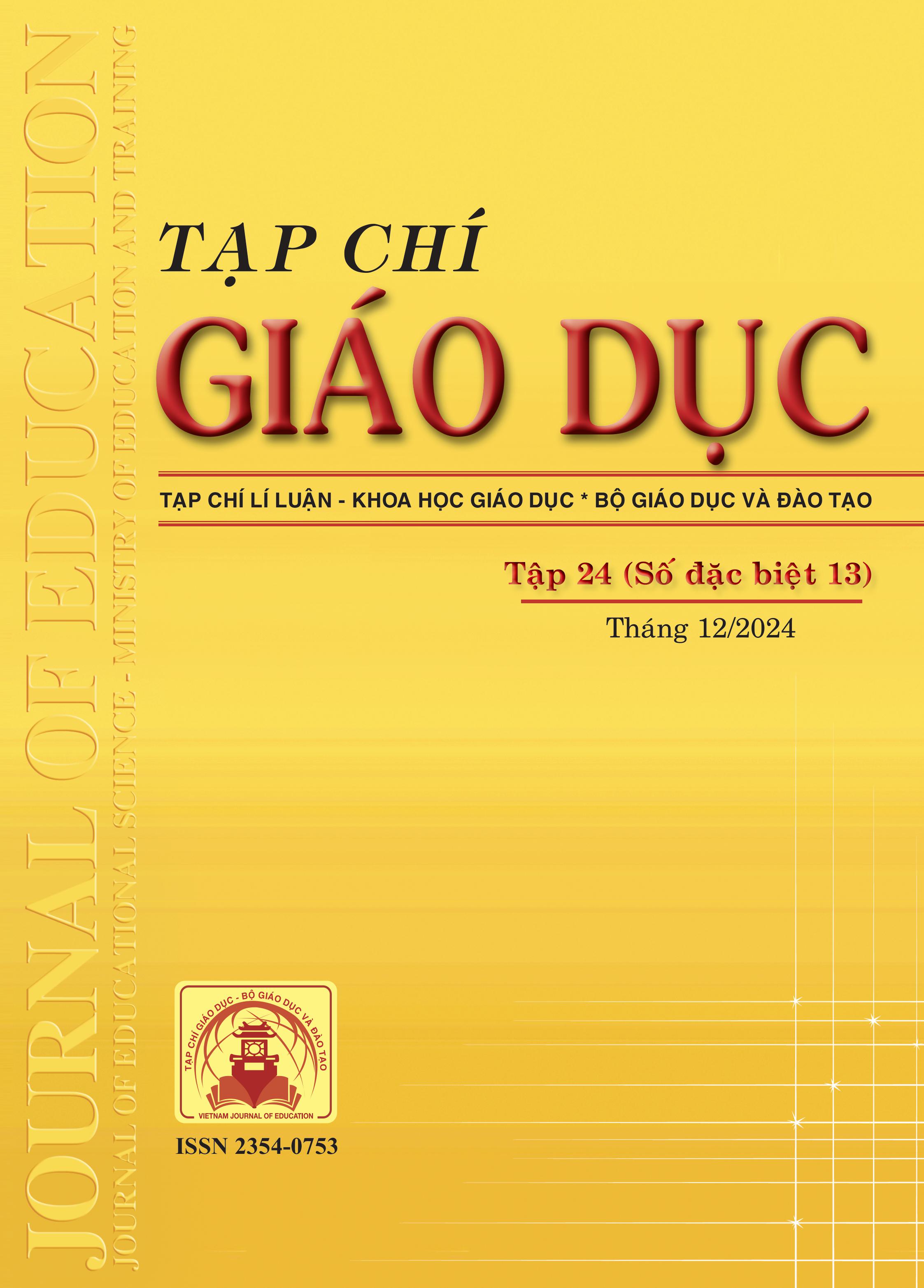Tổ chức giáo dục STEAM theo hướng phát triển năng lực tìm hiểu tự nhiên của học sinh: vận dụng trong chủ đề “Lực” (Khoa học tự nhiên 6)
- Từ khóa:
- STEAM Education
- Force
- Competence
- Natural Inquiry
Tóm tắt
STEAM education, with the integration of Science, Technology, Engineering, Arts and Mathematics, has become an important educational trend in the 21st century, especially in Natural Science teaching. STEAM not only develops knowledge but also promotes critical thinking, creativity and problem solving. However, the application of STEAM in the current Natural Science teaching program still faces many challenges, especially in developing students' Natural Learning competence. This article proposes a STEAM education organization process to develop students' Natural Learning competence, with specific application through the topic “Force” in the Natural Science program for grade 6. This process creates creative learning activities, encourages students to explore, develop scientific thinking, problem solving and teamwork. Research results show that the process not only improves theoretical knowledge but also improves practical and collaborative skills. Expanding the application of STEAM processes to other lessons and higher levels of education is necessary to build a sustainable educational ecosystem, comprehensively develop students' competences and meet the requirements of modern education.
Tài liệu tham khảo
Bộ GD-ĐT (2018). Chương trình giáo dục phổ thông môn Khoa học tự nhiên (ban hành kèm theo Thông tư số 32/2018/TT-BGDĐT ngày 26/12/2018 của Bộ trưởng Bộ GD-ĐT).
Beers, S. Z. (2011). 21st Century Skills: Preparing Students for THEIR Future. National Association of Independent Schools.
Bybee, R. W. (2013). The Case for STEM Education: Challenges and Opportunities. NSTA Press.
Freeman, S., Eddy, S. L., McDonough, M., Smith, M. K., Okoroafor, N., Jordt, H., & Wenderoth, M. P. (2014). Active learning increases student performance in science, engineering, and mathematics. Proceedings of the National Academy of Sciences, 111(23), 8410-8415. https://doi.org/10.1073/pnas.1319030111
Henriksen, D. (2014). Full STEAM ahead: Creativity in excellent STEM teaching practices. The STEAM Journal, 1(2), 1-7. https://doi.org/10.5642/steam.20140102.7
Honey, M., Pearson, G., & Schweingruber, H. (2014). STEM Integration in K-12 Education: Status, Prospects, and an Agenda for Research. National Academies Press. https://doi.org/10.17226/18612
Kim, D., & Bolger, M. S. (2017). Analysis of Korean high school biology standards and textbooks for the inclusion of STEM education. Science Education International, 28(2), 150-160.
Kelley, T. R., & Knowles, J. G. (2016). A conceptual framework for integrated STEM education. International Journal of STEM Education, 3(1), 1-11. https://doi.org/10.1186/s40594-016-0046-z
Liao, C. (2016). From interdisciplinary to transdisciplinary: An arts-integrated approach to STEAM education. Art Education, 69(6), 44-49. https://doi.org/10.1080/00043125.2016.1224873
Maeda, J. (2013). STEM + Art = STEAM. The STEAM Journal, 1(1), 34-37. https://doi.org/10.5642/steam.201301.1.7
Park, H., Byun, S., Sim, J., Han, H., & Baek, Y. (2016). Teacher Integration of Technology into Instruction in Korea: Current Status and Association with Teacher and School Variables. Educational Technology & Society, 19(3), 286-298.
Sousa, D. A., & Pilecki, T. (2018). From STEM to STEAM: Brain-compatible strategies and lessons that integrate the arts. Corwin Press.
Thomas, J. W. (2000). A review of research on project-based learning. San Rafael, CA: Autodesk Foundation.
Yakman, G., & Lee, H. (2012). Exploring the Exemplary STEAM Education in the U.S. as a Practical Educational Framework for Korea. Journal of the Korean Association for Science Education, 32(6), 1072-1086. https://doi.org/10.14697/jkase.2012.32.6.1072
Đã Xuất bản
Cách trích dẫn
Số
Chuyên mục
Giấy phép

Tác phẩm này được cấp phép theo Ghi nhận tác giả của Creative Commons Giấy phép quốc tế 4.0 .












